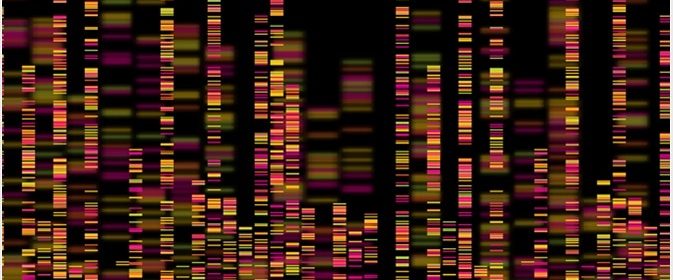Shotgun Metagenomic Sequencing

Diverse microbial communities exist all around Earth, both within our bodies and our external environment.

Studying the components of these communities can offer insight into human biology and environmental complexity, however many microbes can be difficult to culture.
Shotgun metagenomic sequencing uses genetic analyses of DNA from several types of cells in a community to understand what organisms are present and their physiology.
History and Applications
Shotgun metagenomic sequencing is a relatively new sequencing approach that allows insight to be gained into community biodiversity and function.
The function of shotgun metagenomic sequencing is to sequence the genomes of untargeted cells in a community in order to elucidate community composition and function.
Research using the method, taps into several fields due to the broad existence of large microbial communities. For example, the study of soil microbiota has led to advances in understanding and treating plant pathogens.
In human gut microbiota, the use of shotgun metagenomics discovered how common antibiotic genes are in our gut bacteria.
Before shotgun metagenomic sequencing, other genetic approaches were used. 16S rRNA analysis was one such method.
It works by targeting a highly informative sequence in the bacterial genome and has revealed much about bacterial phylogenies. They have also increased our knowledge in the following; host-pathogen interactions, bacterial disease mechanisms and how microbial communities interact.
Such methods have crucial limitations which researchers sought to solve when developing shotgun metagenomic sequencing. Amplicon sequencing, which encompasses 16S rRNA sequencing and some other types, can produce different indications of diversity.
Sequences can also be incorrectly assembled, making them difficult to analyze. More importantly, amplicon sequencing techniques only reveal phylogenetic information but does not give indications of function.
16S rRNA sequencing can also be difficult when unknown microbes are being studied. These may lack informative markers or primers which means they are not picked up by the amplicon sequencing.
Viruses are a common example of this. Lastly, microbes can engage in horizontal gene transfer which may cause informative sequences, used to characterize a community, to be spread to unrelated microbes. This can be problematic for diversity estimates generated by amplicon sequencing techniques.
Method
The method for shotgun metagenomic sequencing starts with the extraction of DNA from all cells in a community. The DNA is then fragmented into smaller components which are independently sequenced. This avoids using a specific genetic locus as a target for sequencing.
The independently sequenced fragments align to loci for the multitude of genomes in the sample. This includes non-microbes, thereby overcoming the virus weakness present in amplicon sequencing.
The aligned sequences can be from taxonomically informative sequences, such as the 16S rRNA sequence, but also from biologically informative ones which give insight into function.
In shotgun metagenomics, measures of taxonomic diversity can be ascertained in several ways. Marker gene analysis takes the sequences and compares them to a database of known taxonomically informative sequences. It is these informative sequences that are called marker genes.
An algorithm can then classify if the obtained sequence is a homologue of the marker gene and annotates similarity. Another analysis method is called binning, of which there are several methods.
Compositional binning clusters metagenomic sequences into groups depending on their composition.
Similarity binning clusters sequences depending on their similarity to a database of known taxonomically annotated sequences. Fragment recruitment is another binning method where sequences are aligned to other, nearly identical sequences. The result is a metagenomic estimate of the genome.
Limitations
While shotgun metagenomic sequencing overcomes many of the limitations of amplicon sequencing, it also has its drawbacks.
Like many recently developed methods, it produces vast amounts of data that need to be analyzed. This can be computationally demanding, and therefore access to shotgun metagenomics can be limited by computing facilities. This problem relies on advances in technology and cloud-sharing platforms, which relieve the pressure placed by this weakness.
While avoiding biases placed by PCR in amplicon sequencing, shotgun metagenomics has its own bias limitations.
Many methods for analyzing results rely on existing knowledge of genomes, which is most widely available for microbes that are easy to culture, for example, human and plant pathogens, and microbes commonly used to model organisms. Similarly, many genes are not yet annotated.
This can make analysis of the functionality of metagenomes complicated, since the information is not available. This problem, however, can be solved relatively easily by gene-specific functional studies.
Sources
- https://www.ncbi.nlm.nih.gov/pmc/articles/PMC4059276/
- https://www.ncbi.nlm.nih.gov/pubmed/28898207
- https://www.ncbi.nlm.nih.gov/pmc/articles/PMC4059276/
Further Reading
- All Genomic Sequencing Content
- Whole Genome Amplification in Forensics
- Tissue-Specific Transcriptome Analysis
- How Does Whole Genome Bisulfite Sequencing Work?
Last Updated: Sep 13, 2018

Written by
Sara Ryding
Sara is a passionate life sciences writer who specializes in zoology and ornithology. She is currently completing a Ph.D. at Deakin University in Australia which focuses on how the beaks of birds change with global warming.
Source: Read Full Article